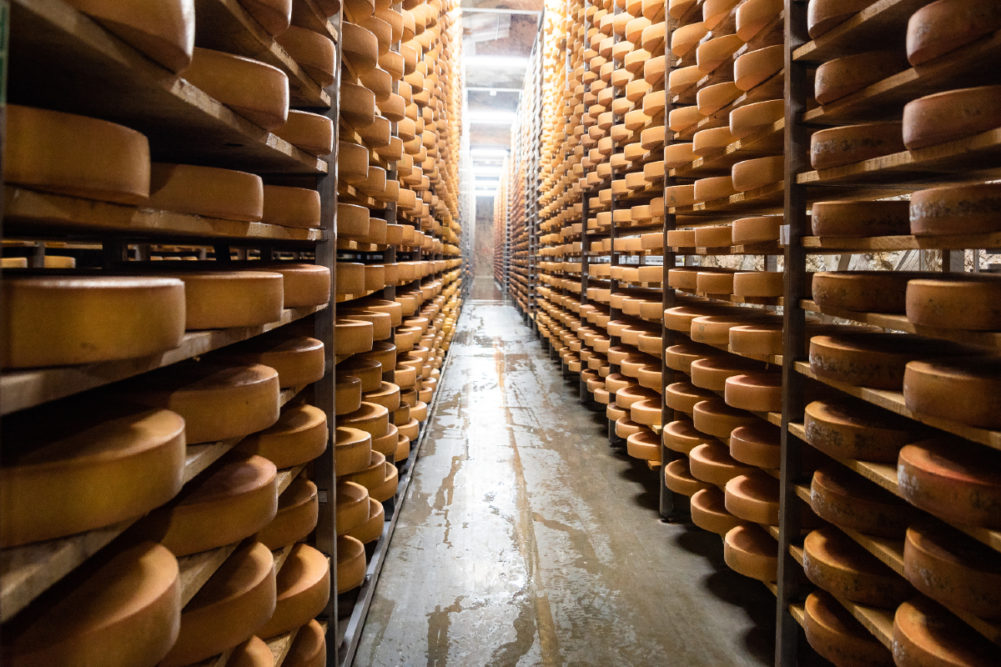An adequate cold storage system is essential in protecting the integrity of dairy products and to help eliminate food waste. The changes in the market have created increasing demand on temperature-controlled space across North America.
The global cold storage construction market is projected to reach a market size of $18.59 billion by 2027 at a CAGR of 13.8%, and revenue growth is expected to be supported by a robustly expanding food and beverages industry worldwide, according to recent analysis by Emergen Research.
Temperature, moisture and humidity in the atmosphere are factors that can adversely affect shelf life of dairy products throughout the entire supply chain system. Losses can occur at any point during the production, processing or distribution of dairy products. Proper packing, packaging, transport and delivery help to ensure a prolonged shelf life. Generally, food products are safe when stored at temperatures of 40 degrees or lower. Having an all-encompassing cold chain storage system in place can protect dairy products.
New construction
Dairy products are required to be stocked at warehouses or in refrigerated settings. Food processing industries are increasingly adopting more efficient cold storage facilities by investing in the development and introduction of more advanced technologies.
In August 2020, Hudsonville Ice Cream, Holland, Mich., broke ground on a $35 million project that added a new cold storage hub to its headquarters.
The family-owned creamery, in business since 1926, added a 156,466-square-foot, -20-degree freezer space to its campus.
The facility was built by Ti Cold, formerly Tippmann Construction, and features a refrigerated dock and nine dock doors as the ice cream maker works to accommodate the logistics that come with expanding its products into new stores and states with each passing year.
This is the latest in the evolution of the facility, which also saw upgrades in 2018 when the company added a new silo alcove, pilot plant and test kitchen used to develop and test new flavors and products.
“We take great pride in our ability to reinvest in our home region of West Michigan as we continue to grow the distribution of our ice cream throughout the Midwest,” said John St. Aubin, operations leader, Hudsonville Ice Cream. “This expansion allows us to streamline our innovation and product integrity and create jobs for our local economy. With this project, our ice cream will move from the manufacturing line straight to our own freezer space before it is distributed to retailers and reaches homes in more than a dozen states.”
Ti Cold designs and builds warehouses that process, cool, freeze, temper and store a wide range of products. The company has been in business for over 100 years, helping companies solve unique cold storage challenges in the United States and Canada.
“One of the keys to the success of Ti Cold is the turn-key nature of our processes,” said Sam Tippmann, president of Ti Cold, based in Fort Wayne, Ind. “We bring time-honed expertise to provide a full suite of cold storage construction and development services, including master site planning and operations guidance.”
Leaning into automation
As part of increasing innovation for warehouse automation, robotics technology will continue to drive the cold chain through 2022 and beyond. The robotics market is expected to grow at a compound annual growth rate of 10%, reaching almost $70.6 billion by 2028. Robots can prove incredibly helpful in managing inventory from the warehouse to the shipping zone, improving the efficiency, speed, reliability and accuracy of moving products.
Until recently, cold storage managers and operators had to be physically present inside a facility to monitor product. Today, IoT has an important role in the cold chain system, creating the ability to monitor devices and provide live data about product temperature and location.
Warehouse automation doesn’t refer to a single system, but rather several systems working in tandem. Some common categories of automation include pallet shuttles, Autonomous Guided Vehicles (AGVs), palletizers and depalletizers, and Automated Storage and Retrieval Systems (ASRS).
It can be difficult to fill positions in any warehouse environment, but the harsh environment of a freezing cold or refrigerated warehouse means it’s even more challenging to find and keep quality talent. As consumer packaged goods (CPG) companies grapple with supply chain and cold chain challenges, as well as labor shortages, priorities have shifted to an emphasis on resolving the workforce challenge with more automation.
“Intuitive equipment that trains operators faster is gaining relevance,” said Jorge Izquierdo, vice president of market development at PMMI, during a presentation at Pack Expo Las Vegas. “With all these challenges, CPGs are asking equipment manufacturers to provide equipment that someone they grab off the street can come in and run. That’s not an easy challenge, and so what we’re finding is more intuitive equipment and more remote service and training.”

